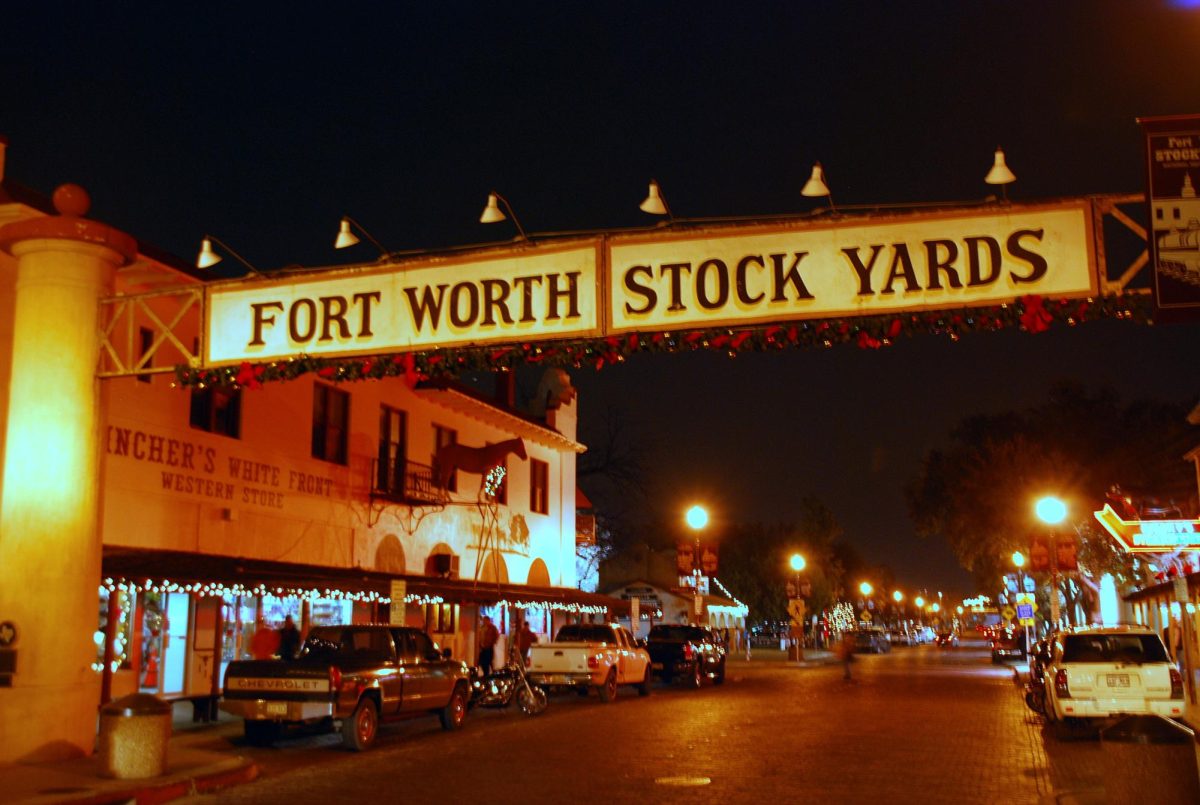The Fort Worth Stockyards, which started as a major shipping point for cattle, is looking to expand their influence. Fort Worth needed a place to put all of their cattle, so they created the Union Stockyards in 1876. However, by the end of World War II, people’s needs had changed and so it evolved into what we now recognize today.
With shows like Yellowstone, Prison Break, Necessarily Roughness, and Queen of the South being filmed there today, the Stockyards are thriving. Very different from the struggles after World War II, it is now prosperous and well-known.
On July 25, 2024, the Fort Worth Stockyards confirmed they are moving forward with their one billion dollar expansion plan. Phase one, commonly known as Mule Alley, was completed in 2021 after seven years of redevelopment. This added 180,000 square feet of boutiques, restaurants, live music bars, and the famous Hotel Drover.
Phase one has been extremely beneficial for revenue. Every year the numbers of tourists who visit the Stockyards increase, but after the addition of Mule Alley, the number has grown to over three million. The stockyards administration hopes that expanding even more will have a similar, if not better, reaction.
Phase two is supposed to be like nothing ever seen before. The Stockyards are planning to add 300,000 square feet of commercial real estate, multifamily housing, and underground parking. The cost of expansion is expected to approach 10 figures when it is finished in 2032.
The project has received little backlash from the media and has the full support from city leaders. The biggest concern that has been brought up is about keeping the historical authenticity of the Stockyards. But even then, the vast majority supports the developments.
The Stockyards is notorious for its traditional western culture. Wanting to experience more accurate western arts and traditions is one of the main reasons that tourists come to visit. People worry that with the expansion some of the culture the Stockyards has will be lost.
“The Stockyards made Fort Worth the Wall Street of the west,” senior Chappell Carter ’25 said.
The expansion is expected to nearly double the size of the Stockyards. The project, specifically the urban developments, will take place in the parking lot behind Billy Bob’s and the Cowtown Coliseum. The space will be full of places that exude Western culture, so everyone who visits learns about the history of the Fort Worth Stockyards.
The city has heard from many businesses, both local and national, that want to invest in the commercial area. The plan is to have even amounts of western brands, regional brands, and smaller companies. The commercial space alone is expected to bring $425 million to the city, but when combined with the expected amount for the parking garages, it amounts to $844 million. Underground parking will take more time and money, but it makes room from more developments. At least half of the 1,300 spaces must be available for the public with hourly fees. The Cowtown Coliseum is also expected to have improvements in Phase Two. The Coliseum, which dates back to 1908, is going to have new animal showcases for visitors. The Cowtown Coliseum was added after the rapid success of the newly founded Stockyards. They needed a new indoor showing facility. It was completed in 88 days and became home to the first indoor rodeo.
Phase Two will not consist of any pre-existing structures. Instead, the city plans to find a way to blend the historic buildings and the new construction together. There was success with this when Hotel Drover was added at the end of Mule Alley. Now, it just needs to be done on a much bigger scale.
The project is also expanding the number of hotel rooms available. 500 hotel rooms will be added, as well as space between three hotels. No new chain hotels are coming, but instead, older ones are being renovated. This was decided when the questions about keeping historical authenticity started to arise. But considering how old some of the hotels are, there will need to be lots of renovation.
“I think Phase Two will influence tourism in the Stockyards and allow Fort Worth to broaden their reach and share our rich agriculture,” Carter said.





